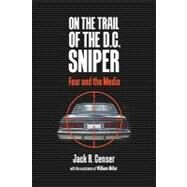On the Trail of the D. C. Sniper : Fear and the Media
, by Censer, Jack Richard- ISBN: 9780813928944 | 081392894X
- Cover: Hardcover
- Copyright: 4/30/2010
For a month in the fall of 2002, a series of sniper attacks suddenly dominated the headlines in the nation's capital. Beginning in the Washington suburbs, these crimes eventually stretched over one hundred miles along I-95 to Richmond. More than a thousand law officers would pursue the perpetrators--an enormous number for one case. The number of reporters covering the story, however, was even greater. On the Trail of the D.C. Sniper uses the remarkable events of that October to explore the shifting character of journalism as it entered the twenty-first century and to question how this change in the way news is gathered and reported impacted the events it covered.Because of its political significance, Washington, although not a huge population center, is home to an international news corps rivaling that of London or New York. The sniper story thus gained unusually broad media coverage. These events also coincided with the rise of cable network news, meaning that the story would be delivered through a greatly accelerated news cycle. Continuous coverage on television meant a more intense race for scoops; when a major development wasn't available, lesser incidents were sometimes played up in an attempt to maintain the sense of an always unfolding story.Jack Censer looks at the atmosphere of heightened anxiety in which this killing spree occurred--coming only a year after the 9/11 attacks, as well as the unsolved anthrax scare centered in the D.C. area--and asks if the press, by intensifying its focus, also intensified the sense of fear.To bring in another perspective, Censer looks closely at the elementary and secondary schools in the area, comparing their experience of the threat with the press's perception, and presentation, of it. In most cases, school officials chose a course of precaution in which life could carry on, rather than one of hypervigilance and lockdowns.Although it is widely thought that journalists have strong political and commercial biases, Censer reveals that in this case the press was motivated, above all, by the creation of a gripping story to evoke emotion from its audience. One of the most detailed studies yet published of how the press follows a story in the twenty-four-hour news era, this book provides a window on post-9/11 anxiety and the relationship between those fears, public events, and the news media.







